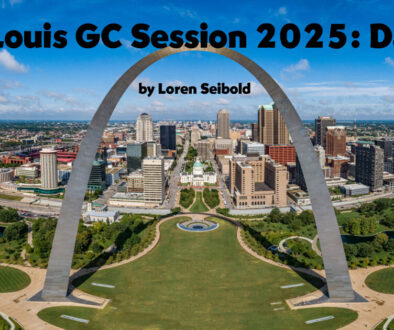Dr. David Wilbur: Power and Illusion: Religion and Human Need. Part 13, Chapter 12
by Ervin Taylor
This is Part 13 of the summary of Dr. Wilbur’s book. It should be emphasized that all of the text in this series of blogs in bold font in the body of the text of the chapter summary has been kindly provided by Dr. Wilbur. If there are any of my own comments, they will follow in regular type.
Summary for Chapter 12: The Universals and the Particulars of Religion
All religions seek to satisfy a similar set of human needs and thus they share many features. However, to justify their independent existence, each must also claim unique knowledge or beliefs.
Possible Universals
Immortality, Happiness, Justice, and Other Worlds
Almost universal in religion is a belief in some form of human immortality either here or in some other realm, spiritual or physical. Along with this opportunity for some form of continued existence comes the claim that eternal happiness is possible in some future existence. In addition these future lives are supposed to allow justice to be served on a personal and even cosmic level.
Ethics and Social Support
To maintain their place among the world religions, they need to provide a high quality of personal ethics. Some problems may arise in applying their ethics to the diverse world. Many people prefer certainty in ethical decisions, so religions often paint the world with a black or white brush—when reality is really shades of grey. Many religions also apply ethics differently to the community of believers than to the wider world of “evil doers” who reject the insider’s beliefs.
The Gods
All religions of which I am aware have at least some strands that offer anthropomorphic Gods or supernatural figures that respond to our entreaties, needs and search for salvation or enlightenment. Alternatively, the philosophical religious specialists, in at least the major world religions, have brought us an alternate God who is beyond human understanding or description—but still cares in some way about our plight here.
Mysticism and Origins
Mystical experiences seem important in the history of most if not all religions. They seem to be there at the start of all new religious strands, justifying them as coming from an experience of the divine. Such experiences are usually a minority activity, but the person who is gripped by these ephemeral events often feels empowered and wants to share.
Establishing a religious orthodoxy means controlling or channeling these sometimes disruptive messages.
Sacrifice and Memorial Architecture
The donations of wealth and life to one’s preferred religion have been regular features of religious cultures both historically and in pre-history. Throughout much of this time, it involved the actual taking of life in some religious ritual. These days, giving a human life to God usually means dedicating it to furthering the goals of a religion in monastic or missionary service or in some other approved-of endeavor. At least part of the wealth donated to a religion is spent on memorial architecture ranging from altars to grand mosques.
Religion, Sexuality, and Family Life
There is evidence within the practices of most religious traditions that at some times and places—even at all times—they consider sexuality and family life to be in conflict with the highest and most dedicated religiosity. No one notices that such people cut off from some central experiences of being human may not reach the highest emotional and intellectual development.
One Proposed Model for the Structure of a Religion
Loyal Rue has offered a model for the structure of a religion and described how his model applies to five major religions. The model proposes a central narrative myth that relates the facts of the universe and the duties of the believers. The central myth is supported by intellectual, experiential, ritual, aesthetic and institutional practices that shape the religion and make the mythic narrative come alive for the believer—shaping his emotions and goals. Dr. Rue believes these systems are the result of the selective processes associated with the social and cultural evolution of the human species.
The Uniques
Religions have two groups of unique features. One group comes from the cultural background where the religion originated. The general culture and the religious culture within which it worked out its belief system often leave marks such as patriarchy. The most important differentiating features of religions probably lie in their metaphysical or supernatural claims. These claims are almost always untestable empirically and so they can never be disproven. Believers are expected to hold all alternate interpretations of the universe as fatally flawed.
Conflict between Religions
The very existence of a religion depends on its maintaining that it has a unique understanding of the universe. These claims usually result in some behavioral demands. Such claims are inflexible. Popper called such systems “oracular irrationalism” and noted that differences could seldom be negotiated and often led to violence if adherents had political power.
Within Religion Conflict: The Moderate versus the Fundamentalist
Within each religious tradition there tends to be a moderate or progressive wing that accepts an evolving human world and expects its religion to accommodate to these changes. In opposition there is almost always a fundamentalist wing with a confident dream of past glory when God founded the group and things were really done as He intended. They can’t accept compromise and are sometimes willing to be violent in their pursuit of this dream. Such a conflict is found somewhere in most religions.
“The illusion is that religion is here to give us peace and togetherness. The reality is that it does this but usually in practice it does it on a limited, piecemeal basis, with the ever-present risk of intense violence, or at least intolerance between conflicting visions.”
ET Comments: As has been noted in an earlier segment of this series, we moderns need to keep in mind that the cultural category which we call “religion” is a relatively recent creation of the Western enlightenment tradition.
When we speak of ancient Roman, ancient Egyptian, or ancient Hebrew religion, we are employing a category which almost no member of those societies would have recognized.
There were a few exceptions to this generalization, mostly among a very small number of Greek intellectuals who became cognizant of the contrasts between Greek and non-Greek ways of thinking and became interested in describing and explaining these differences—including differences between Greek and non-Greek (especially Egyptian) religious beliefs. With this and a relatively small number of other exceptions, most humans in most human groups did not think of how they approached what we would call the supernatural or the spirit world as representing a “religion” among many religions.
How their group did it and what they “believed” was simply what the ancestors had done and thought. How others outside their group did it was hardly relevant, since “those people” might not even be considered human.
We can see early traces of the beginnings of changing perspectives on this point among the Hebrew prophets, the two Isaiahs and Jeremiah, as well as a number of other major sages living from Greece in the west to China in the east during what German scholar Karl Jaspers called the Axial Age, a 600-year period from about 800 to 200 BC. Others in this group would include Lao Tzu, Homer, Socrates, Confucius, and Siddhartha Gautama (Buddha).



